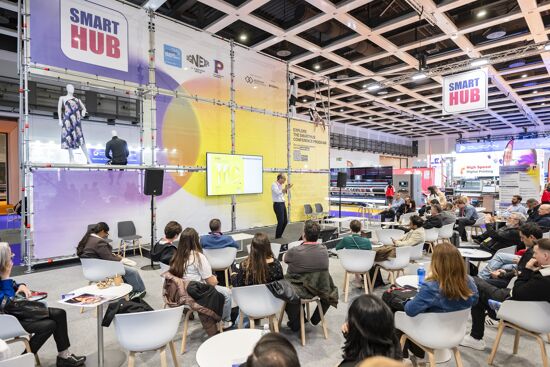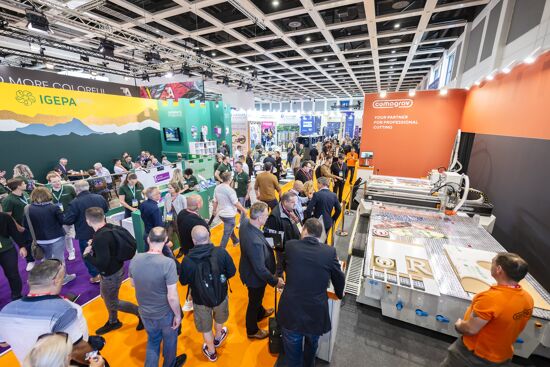The 2018 print applications mix points to infinite possibilities
.png?width=750)
FESPA's Executive Director Sean Holt discusses the latest trends in the speciality print sector founded in the FESPA 2018 Print Census.
One of the unquestionable trends in the speciality print sector in the last decade has been applications diversification. Speciality print service providers (PSPs) have embraced the potential of digital printing technology in combination with analogue processes to print an ever-increasing range of products. This evolution has been accelerated by developments in media and inks, making it possible to produce an array of increasingly customised products that go far beyond the conventional signage and graphics portfolio that historically characterised the FESPA community.
The latest FESPA Print Census results published earlier in 2018 vividly highlight the development of the wide format product mix, and the gradual decline of certain more traditional visual communications products such as billboards and simple posters in favour of contemporary preferences (though they remain resilient among the top four applications).
Inevitably in a community that brings together so many different types of business, the picture varies across the landscape of wide format PSPs. Commercial printers and creative businesses using digital wide format technology still name posters as their most popular product, reflecting their enduring potential for communication and – increasingly – as an interior décor application.
In the sign and display product mix, banners are growing notably in popularity, with more than two thirds of PSPs regularly producing these, and half of all printers who completed the Census seeing continued growth potential from banners. With the proliferation of high-performance banner media and their suitability for so many indoor and outdoor settings, from retail and hospitality environments to events, that trend is likely to continue. It’s also clear that PSPs are applying their skills and expertise in promotional applications to develop new and creative executions using banner media, from branded barriers to tents and gazebos.
POS/POP graphics are ‘bread and butter’ applications for many PSPs, but this area is also showing sustained growth for 59% of businesses, no doubt reflecting the pressures on retail brand owners to increase the visual appeal of physical stores to combat the trend to online shopping, and the need to use all possible tactics to push consumers towards higher margin purchases.
Continuous developments in flatbed print-and-cut workflows are making it easier than ever for PSPs to offer creative printed POS solutions working with media ranging from corrugated board to material with an even longer lifespan such as MDF, wood and even glass, to the point where retail displays become more permanent decorative installations. Of course, we at FESPA have channelled this growing interest in digital printing on corrugated board with the well-received 2018 launch of our Digital Corrugated Experience event feature.
Self-adhesive applications also feature heavily in the contemporary applications mix. More than half of all the respondents to the FESPA 2018 Census told us they are producing more self-adhesive applications, including wraps, vehicle graphics and decals, which may explain the continued enthusiasm for our global FESPA Wrap Masters competition.
Undoubtedly the sustained development of digitally printable self-adhesive media and continuous innovation in adhesives to make application and removal easier both have a role to play in this, extending the potential of these materials beyond more traditional signage and vehicle applications, to decorative and functional floor and window graphics, as well as surface décor.
Another clear growth trend in the 2018 Census findings is the sustained rise of printed décor applications, as reflected in the FESPA Printeriors showcase and in the visible presence of interior décor applications across the majority of FESPA exhibitor stands today. Three out of four FESPA Print Census 2018 respondents indicated wallpaper and interior décor as a growth area for their business.
I won’t do more than touch on the growth of textile printing here, as it is such a significant area of development and investment that we specifically expanded the scope of the 2018 Census to dive deeper into this topic, and it will merit its own blog!
From my perspective, the optimism that was so apparent in the 2018 Census findings is a consequence, not only of the financial stability and growth that PSPs are now enjoying as a result their digital investment strategies, but of PSPs’ irrepressible determination to move with the times and devise new product and service offerings that reflect the dynamic retail marketing and visual communications landscape.
Topics
Interested in joining our community?
Enquire today about joining your local FESPA Association or FESPA Direct
Recent news

Industry Experts Explore the Evolution of Smart Manufacturing in the Textile Industry
A FESPA SmartHUB roundtable at Personalisation Experience 2025 discussed smart manufacturing's transformative impact on the textile industry. Experts highlighted the shift to on-demand customisation, driven by digital printing, data analytics, and automation. Key takeaways included enhanced machine control, significant waste reduction through intelligent software and colour management, and improved sustainability via energy efficiency and near-shoring, ensuring agility and environmental responsibility in textile production.

FESPA 2025 gathers leading visionaries from across the speciality print industry in Berlin
FESPA Global Print Expo 2025, European Sign Expo and Personalisation Experience (6 – 9 May 2025, Messe Berlin, Germany) welcomed Visionaries from across the speciality print industry to shape the future of print, develop forward-thinking business strategies, and explore innovative ways to translate emerging industry trends into tangible growth opportunities.

Exploring Cutting-Edge Textile Printing Innovation with Adobe Print Engine 7
Adobe PDF Print Engine 7, launched at FESPA Global Print 2025, significantly advances textile printing. Debbie McKeegan shares how it automates non-white substrate management and RGB colour handling, expands colour gamuts with in-RIP multicolour transparency blending, and streamlines workflows for efficiency and sustainability. This update boosts customisation, reduces waste, and positions businesses at the forefront of digital print innovation.

FESPA Global Print Expo 2025 - Overall Highlights
FESPA Global Print Expo, Europe's leading print and signage exhibition returned to Messe Berlin from 6 - 9 May 2025.